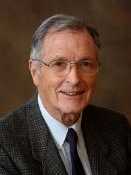Year: 2009
Earlier conceptual design studies (Bussard, 1990; Miley et al., 1998; Burton et al., 2003) have described Inertial Electrostatic Confinement (IEC) fusion propulsion to provide a high-power density fusion propulsion system capable of aggressive deep space missions. However, this requires large multi-GW thrusters and a long term development program. As a first step towards this goal, a progression of near-term IEC thrusters, stating with a 1 -10 kWe electrically-driven IEC jet thruster for satellites are considered here. The initial electrically-powered unit uses a novel multi-jet plasma thruster based on spherical IEC technology with electrical input power from a solar panel. In this spherical configuration, Xe ions are generated and accelerated towards the center of double concentric spherical grids. An electrostatic potential well structure is created in the central region, providing ion trapping. Several enlarged grid opening extract intense quasi-neutral plasma jets. A variable specific impulse in the range of 1000-4000 seconds is achieved by adjusting the grid potential. This design provides high maneuverability for satellite and small space probe operations. The multiple jets, combined with gimbaled auxiliary equipment, provide precision changes in thrust direction. The IEC electrical efficiency can match or exceed efficiencies of conventional Hall Current Thrusters (HCTs) while offering advantages such as reduced grid erosion (long life time), reduced propellant leakage losses (reduced fuel storage), and a very high power-to-weight ratio. The unit is ideally suited for probing missions. The primary propulsive jet enables delicate maneuvering close to an object. Then simply opening a second jet offset 180 degrees from the propulsion one provides a ?plasma analytic probe? for interrogation of the object.
The technology underlying this electrically-driven jet unit leads naturally to a next generation fusion driven unit. For example, a low-Q version of one of the modules designed for the magnetically-channeled IEC trap array propulsion plant (Miley and Wu, 2007) could be used for next generation power units to replace current HCTs. These commonly generate 0.2 - 1.0 Newton's of thrust and 3-12 kWe for LEO or MEO to GEO orbit transfer as well as station keeping or orbit plane changes. The fusion IEC version offers major advances in system power density and eliminates use of increasingly scarce fuels like Xe. A feature of the IEC type fusion device is its non-Maxwellian operation, enabling use of advanced fuels such as the D-He employed in the Space Ship II design (Burton et al., 2003). p-B11, such as used in (Bussard, 1990), represents an ultimate goal. Such units would initially be for large orbiting satellites, and then scaled up for use as a power/propulsion unit for a manned Mars or beyond interplanetary spacecraft.


